The Raven's Nest: An Icelandic Journey Through Light and Darkness
by Sarah Thomas
Sarah Thomas’s debut memoir, set in a remote, starkly beautiful region of Iceland, is moving meditation on landscape and identity.
Tell us about your debut, The Raven’s Nest. You’ve describe it as an ‘ecological memoir’; tell us more.
The Raven’s Nest is a memoir inspired by living in Iceland’s Westfjords in the six years following the financial crisis of 2008. It is about resilience and uncertainty and chance, and about how that experience changed the way I think about my place in the world and making home in it.
It has several threads in its weave: the light and its absence, the way learning Icelandic rearranged the architecture of my thinking, the continuity between people and place, the insufficiency of my anthropologist self to grasp it, and how love – for the landscape, an Icelandic man called Bjarni, and a little wooden house—shaped me.
It is a love letter to a place that has often been perceived as an ‘edge’, or a sparsely populated ‘wilderness’. By bringing the reader alongside the many lives—human and other-than-human—which inhabit it, I hoped to frame it as the ‘centre’ that it is. In recent years we have become much more aware of how the Arctic is entangled with our lives – in the way that it regulates climate, ocean currents, food sources for myriad species. What happens there happens to all of us.
I call it ‘ecological memoir’ for several reasons. It is ecological in the sense that the story happens within, and often is, the context of various ecological issues playing out—life and death, boom and bust, flourishing and collapse: unprecedented melting of the Greenland Ice Sheet, polar bear strandings, runaway cruise ship tourism, mass herring deaths. And equally, gannets thriving from an abundance of dead herring, volcanic eruptions birthing new landscapes and habitats, and the fecundity of Arctic summer. It speaks of the intimate and reciprocal relations between the human and other-than-human worlds and how I felt drawn into that web. Its structure, too, could be understood to be ecological in that everything is related to, or tugs at, everything else. It is inspired by a raven’s nest: a cyclical weave of many strands and fragments which rupture and repair. Finally, it is ecological in that it traverses genres: a node in an ecosystem of literatures.
The Raven’s Nest tells the story of your half decade in Iceland’s Westfjords region. Can you tell us about the landscape there and how it affected you?
It is hard to describe ‘the landscape’ in any singular terms because it is so different in summer and winter – especially in terms of the effect it had on me. I first went to the Westfjords as a film maker, for an ethnographic film festival, in late May 2008. This is the time of year when it begins to never get dark, with wild pink sunsets at 2am which continue until the sun rises again a few hours later. This simple but profound phenomenon of night being bright made me deeply curious about all the things I had previously taken for granted.
Then follows a remarkable surge of life: the arrival of the migrating birds, rhubarb pressing out of the thawed earth, then wildflowers pushing up to be singing their hearts out by Midsummer. Your own energy returns in force and there is nothing to signal the moments of the day where things ‘normally’ happen. You eat when you are hungry and sleep when you are tired. It would be perfectly normal to visit a friend at 11pm.
The Westfjords is all steep-sided basalt mountains – most of them flat on top, with funnels of scree pouring down their flanks – and deep fjords reaching inland, such that the distances one must travel between settlements on the coast roads is much greater than the distance as the crow flies. Waterfalls tumble from the mountains with the constant supply of snowmelt. There are many hot springs because Iceland is volcanic. The molten earth is never far beneath you, and the surface may crack any time, which it does on four occasions during the narrative – not exactly where I was, but in ways that impacted on me emotionally, or practically. This might sound a lot, but it shows how ‘normal’ tremors and eruptions are.
In winter it is altogether different. It snows from September to May (at least it did when I lived there) and this accumulation never totally melts from the mountaintops. All the birds except the ravens and the snow buntings seem to disappear. Everything is covered in a white blanket and direct sun vanishes completely for several months. I lived in a steep-sided valley which meant the sun returned to me three months later than the neighbouring main town. My energy became sluggish, and I forgot all my ideas. It was a hard time. And there can be fierce storms. People tie down or put away garden objects as a matter of course before winter begins. Magical things happen too, like the aurora borealis, or the light of a full moon reflected by snow being bright enough to read by. Moments like this expanded my sense of what is possible.
The landscape is not something that you can pretend you are separate from. You are at stake in it, and to a great extent you are also it. This is true wherever on the earth we stand, but in Iceland this truth was made strikingly apparent. There are so few layers separating you from the earth and its workings that it is very easy to observe cause and effect. To feel so entangled with the world – not intellectually but bodily – could only change everything.
How long were you at work on this book?
A very long time! From first seeds to publication, it was nine years.
I did not set out to write a book. When I lived in Iceland, I was actually trying to make an observational documentary. In a way, this is a book which responds to my failure to make a film. But the experiences lodged deeply and vividly in my memory, probably because they were so new, and perhaps also because of my film maker’s gaze: they had been footage I’d shot or I had perceived them as potential footage at the time, ‘filming’ them with my mind. This meant that I could draw on those memories in sharp focus years after I had left.
I did need to gain some distance—both temporally and spatially—in order to make any kind of sense of it all. This is partly because I was so changed by it, so I had to figure out who was telling this story before I could write it. I only started writing once I had moved back to the UK, and by the time I was doing the final edits, the narrator was 12 years younger than I am.
I knew I would need to approach this book in a way that allowed it the space and time to reveal itself to me, so I decided to do it as a PhD in Interdisciplinary Studies. This allowed me to contextualise it as a kind of memoir of the Anthropocene.
What writers would you say are your greatest influences?
I could read anything by Nan Shepherd, Rebecca Solnit, Jay Griffiths, and Robin Wall Kimmerer for the rest of my life. And there are some authors whose particular works have had a massive impact on me. I can’t discern the extent to which own writing is directly influenced by them, but their work still reverberates inside my mind and heart, so it must have an effect on what I create. These are Tanya Tagaq’s Split Tooth, for its hybrid, shapeshifting form and communion between the viscerally real and the supernatural; Tyson Yunkaporta’s Sand Talk: How Indigenous Thinking Can Save the World—for the effect of the narrator’s use of the pronoun ‘us two’ in place of ‘I’ in terms of the places he can take the reader as a guide and companion; and Tarjei Vesaas’ The Hills Reply for its extraordinary de-centring of the human narrator.
It’s important also to emphasise the degree to which I am influenced by the writing of the living world itself – the slow nocturnal pirouettes of grazing limpets, the feather-etch on windowpane of frost, the silken smoothness of sea-worn lava, the slick breach of a humpback whale, and the echo of rockfall as it traces vertical lines in the snow. The Icelandic word for echo is bergmál, which translates as ‘the language of the mountain’, which for me says it all.
You have a background in anthropology. What do you think this has brought to your writing?
In short, I think it was a crisis of identity about the anthropological gaze that turned me into a writer. My failure to make a film (an observational documentary) that I mentioned earlier was in large part because this was the first time I had tried to make a film about people I was also trying to live with and amongst; people who I loved and with whom I would have ongoing relationships. I did not know how to handle my positionality. The people I was filming—mostly family members and their friends—were very accepting of it, even keen. But I didn’t find it appropriate (and nor did it work) to be the ‘invisible observer’ behind the camera which observational cinema requires. People would speak to me across the camera or ask me to help them with the activity I was filming. It was not compatible with living fully. I also became sharply aware of how subjective reality is, and I felt I could say things that were far more truthful by being in love, being vulnerable, being messily implicated in my own and others’ lives, than I could if I had a ‘research’ hat on. I did not want to study anyone. I wanted to live with them, and to be curious because it was also my world.
That all said, as one might expect, an ethnographic curiosity is there in the narrator’s voice, push-pulling with the lostness of a newly arrived immigrant who keenly feels that much is beyond her control—especially in the first half. As the narrative progresses, she becomes increasingly comfortable with not knowing, not understanding, as a kind of knowledge in itself.
The discipline of anthropology has of course changed a lot over the years to take account of the presence of the anthropologist, but still, as I ask in the book, I wanted to know ‘what would recording without possessing look like?’
Can you recommend any reading for those wishing to know more about Iceland and its people?
For a sense of the foundations of Icelandic society, culture and psyche, fine places to start would be these beautifully written historic novels: Halldór Laxness’ Independent People and Jón Kalman Stefánson‘s Heaven and Hell.
I love Oddný Eir‘s autofiction Land of Love and Ruins for its breezy narrator, and yet its profound depth and scope—a twining of qualities I experience as characteristic of ‘Icelandicness‘.
Novelist Sjón‘s diverse body of work encapsulates what he calls the ‘marvellous’ nature of Iceland and its history, in sparse and often humorous prose.
Andri Snær Magnason‘s Dreamland: A Self Help Guide for a Frightened Nation and On Time and Water are insightful and deeply poetic environmental treatises on Iceland‘s future, and all of our futures. The latter draws on his very particular family history, his grandparents having participated in the mapping of Iceland‘s glaciers, many of which are now much diminished. The world‘s first funeral for a glacier was held for one of them, Ok, for which Maganson wrote the eulogy.
Sarah Moss’s memoir Names for the Sea: Strangers in Iceland details her experience of living in Reykjavík contemporaneously to my time in the Westfjords, in the ruins of the 2008 financial crisis, and looks at Iceland and its culture as an immigrant who struggles to feel like an insider.
Speaking across time between two writers’ experiences of Iceland, in Questions of Travel: William Morris in Iceland poet Lavinia Greenlaw responds in hybrid prose to extracts of William Morris’s Iceland writings.
For writings which weave perceptive threads of experience of Iceland and Icelanders into a broader fabric, I recommend Rebecca Solnit‘s The Faraway Nearby and Eileen Myles’ essay collection The Importance of Being Iceland.
I am also looking forward to reading artist Roni Horns Island Zombie: Iceland Writings. Given her long and extensive relationship with Iceland I imagine it will be no less than a rich and poetic exploration.
—Sarah Thomas, October 2022
Support Five Books
Five Books interviews are expensive to produce, please support us by donating a small amount.
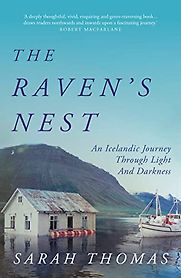
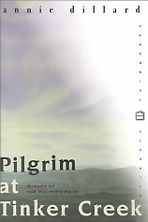
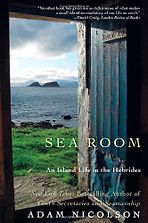
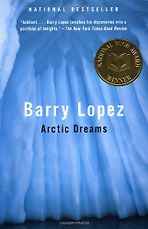
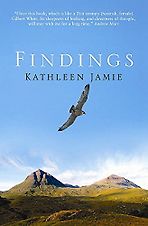
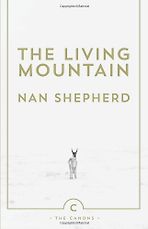
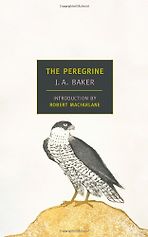
The book, according to the author